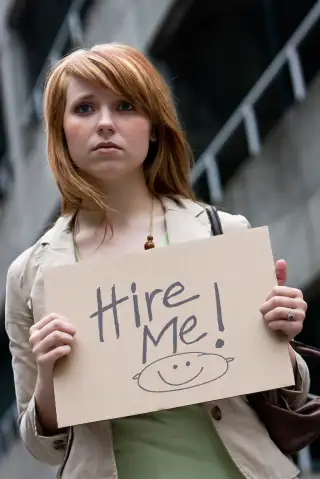Why We Should Be Happy With a Higher Unemployment Rate

For the most part, Friday's jobs report is clearly reason to cheer. The economy added 257,000, making January the the 12th consecutive month employers hired over 200,000 workers. The Labor Department even revised earlier figures, announcing 147,000 more jobs were created in November and December than previously thought.
But in spite of all this great news, one number seemed to stick out: the unemployment rate actually went up, jumping from 5.6 to 5.7 percent.
That's not a big change but it doesn't seem to jibe with everything else happening in the economy. How could the unemployment rate still be increasing when hiring seems to be at a post-recession high?
The answer is the official unemployment rate, at least by itself, doesn't actually measure the economic recovery very well. This metric, also known as U3, is one of six different ways the Department of Labor measures unemployment, and it only includes people who are unemployed and actively looking for work. That means people who are unemployed but too discouraged to look for a job aren't included in the unemployed population.
This quirk is what Gallup CEO Jim Clifton was talking about when he called the unemployment rate a "big lie," but it's actually telling the truth if you know what to look for. When hiring increases, as it has over the past year, people who previously gave up searching for work will once again start trying to find employment. This is obviously a good thing, but for the moment an influx of new job hunters is pushing up unemployment numbers because those who just began searching for work after a long break are essentially treated as newly unemployed.
"I don't think [Friday's unemployment bump] is a big deal," says Elise Gould, a senior economist at the Economic Policy Institute, a left-leaning think tank. "I think that is mostly due to people coming back into the labor force—some of them finding jobs, some of them not finding jobs."
In fact, as the economy continues to recover, it's likely the unemployment rate will likely stay the same or even increase. "If had to project the unemployment rate, I would expect it would hold steady and could move a little up, but I don't think we're going to see it going down," explains Gould. "As the economy gets stronger more people will enter the labor force and that will move the unemployment rate, potentially in the wrong direction."
All this sounds nice in theory, but do we really know more people are entering the job market? The most accurate metric we have to answer that question is the labor force participation rate, which includes everyone who is working or looking for work. Unfortunately, that number can be misleading since many older Americans are leaving the market at the same time job-seekers are re-entering it, leading to a long-term downward trend.
Luckily, today's report shows enough people started looking for work in January to push the labor force participation rate up a tick. It wasn't much—less than a percentage point—but even a small increase is meaningful when the demographic tide is flowing the other way.
At least for once, a higher unemployment rate isn't so bad.